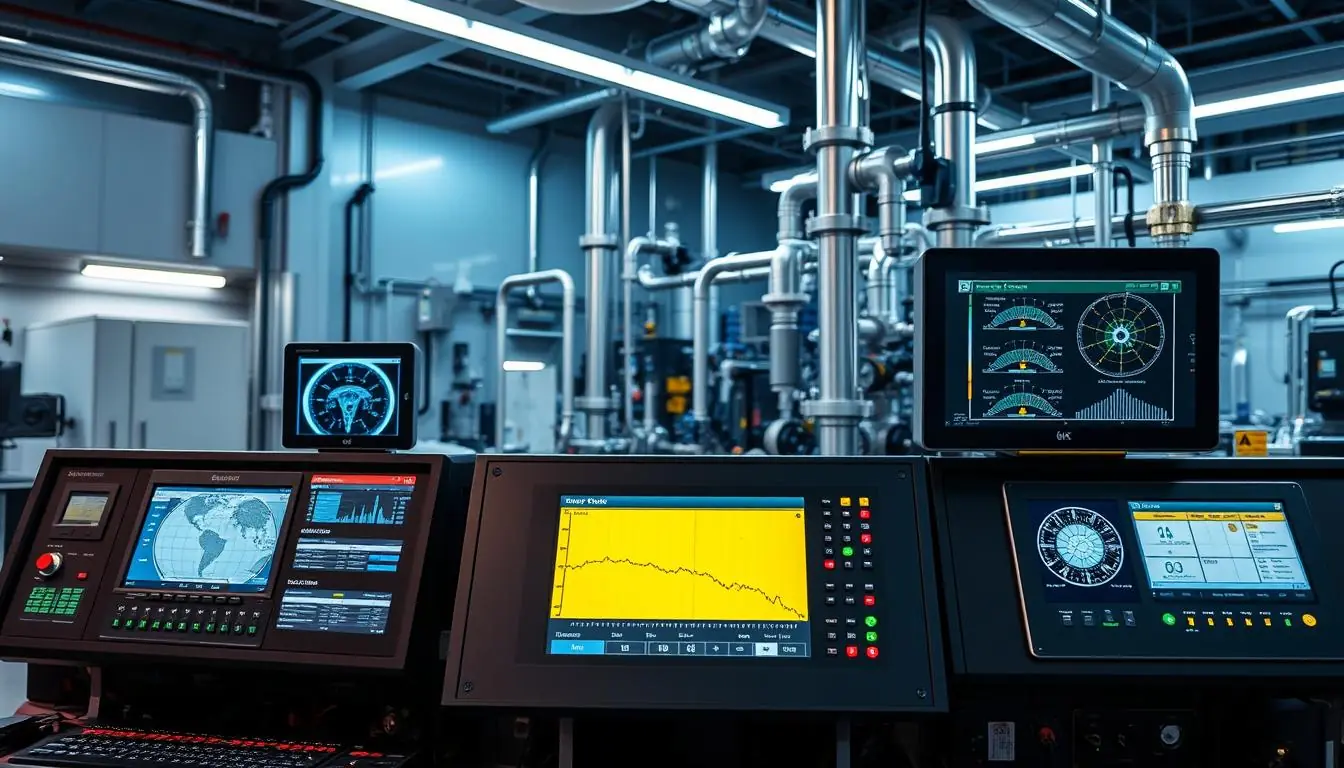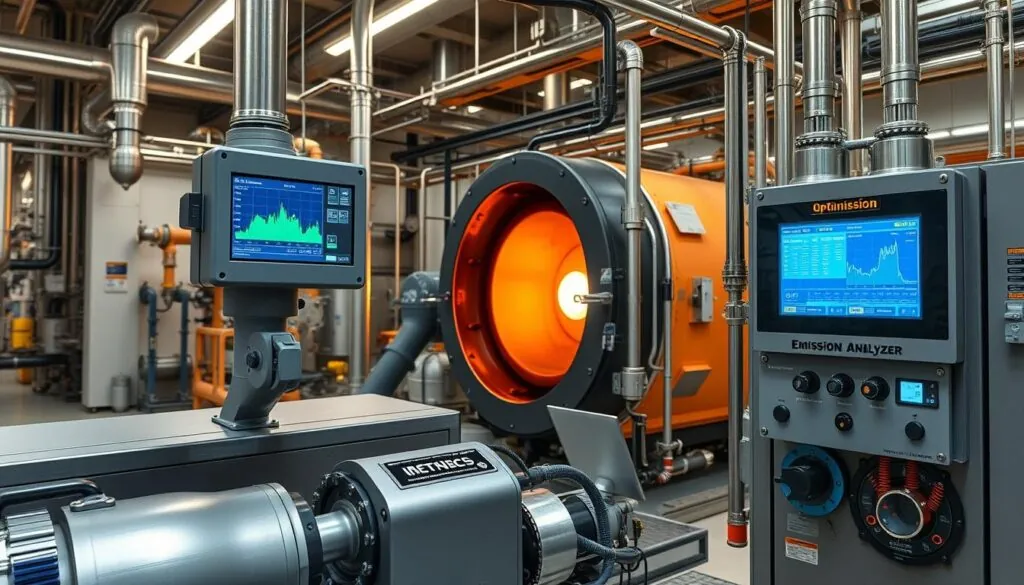Ever wondered how industries manage that tricky balancing act – staying profitable while minimizing their environmental footprint? As of March 2025, emissions analyzers are the unsung heroes making it happen. These smart gadgets keep an eye on pollutants in real-time, helping businesses slash emissions, run smoother operations, and nail strict environmental rules. All this, while helping keep our air cleaner for everyone. I’ve seen firsthand how these analyzers turn complex data into clear actions, and trust me, it’s a total game-changer.
Why Emissions Analyzers Are More Crucial Than Ever
With the world’s carbon budget getting tighter (around 380 billion tons left by early 2025!), industries are feeling the heat to clean up their act, fast. That’s where emissions analyzers swoop in. Using sophisticated sensors, they accurately monitor nasty gases like carbon monoxide (CO), sulfur dioxide (SO2), and nitrogen oxides (NOx). It’s not just about ticking regulatory boxes anymore; in a world watching environmental impact closely, using these tools is essential for staying competitive and responsible.
I’ve chatted with plant managers who absolutely rely on these analyzers. They help spot costly leaks early, fine-tune combustion for better fuel efficiency, and keep those regulatory inspectors happy. Think of them as your facility’s green conscience that also happens to boost your bottom line.
Key Perks of Using Emissions Analyzers
- Real-Time Monitoring: Get instant updates on emissions levels – no more guesswork. You know exactly what’s coming out of your stacks.
- Smooth Regulatory Sailing: Easily meet tough environmental standards, like the EU’s WI BREF guidelines updated in 2024. Stay compliant, avoid fines.
- Boosted Process Efficiency: Optimize fuel use, cut down on waste, save money, and be kinder to the planet – all at the same time.
- Targeted Pollution Control: Precisely measure and reduce harmful emissions like nitrogen oxides (NOx) and carbon dioxide (CO2).
Supercharging Combustion with Emissions Analyzers
Picture this: a factory humming along, burning fuel more cleanly and efficiently than ever. Emissions analyzers make this a reality. By continuously checking the flue gases, they measure pollutants like NOx and oxygen levels. This data helps operators tweak the fuel-air mixture for the sweet spot – optimal combustion. The payoff? Less wasted fuel, lower emissions hitting the air, and healthier profits.
Take the NOVA 7200 Series, a popular choice in 2025. These units deliver quick and accurate readings, helping plants stay efficient. They’re even versatile enough to support cutting-edge tech like hydrogen-powered engines – pretty cool, right? It shows how this isn’t just about fancy gadgets; it’s about embracing smarter, cleaner ways to power our industries.
Making Flue Gas Monitoring Simple
Flue gas monitoring sounds complex, and honestly, it can be. But emissions analyzers cut through the complexity. They break down exactly what’s in your exhaust—from oxygen (O2) and carbon dioxide (CO2) to trickier stuff like sulfur dioxide (SO2)—making sure your plant stays well within legal emission limits. For example, the Testo 350 analyzer can handle up to six different gas sensors at once and even connects via Bluetooth, making data access super easy for your team.
Portable analyzers, like some offered by Nova Analytical Systems, remain favorites in 2025 because they’re built tough and are easy to grab and go. These reliable workhorses have been monitoring boilers and furnaces for over 35 years, proving they can handle demanding industrial environments.
Quick Tech Face-Off
| Model | Main Features | Common Gases Measured |
|---|---|---|
| NOVA 7200 Series | Weather-proof options; fast readings (often 20-30 secs); continuous monitoring | O2, CO, CO2, SO2, NO, NO2; stack temps up to 1800°F (1000°C) |
| Testo 350 | Portable; Bluetooth connectivity; modular (up to 6 sensors); long battery life (up to 10 hrs) | O2, CO, CO2, NO, NO2, SO2 (optional), H2S, CxHy; wide temp range |
Boosting Your Bottom Line with Real-Time Data Insights
Want proof these tools deliver serious value? A German power plant slashed its maintenance costs by a whopping 80% in 2024 just by using emissions analyzers with automated calibration features. How? These analyzers provide a live stream of data, giving operators the insights needed to fine-tune processes, cut energy waste, and lower emissions—all without slowing down production.
Consider the ABB ACF5000 analyzer. As of late 2024, it was certified for a full year of maintenance-free operation! That kind of reliability helps users cut operating costs by around 30%. Using tech like UV spectroscopy to track tricky gases like NO and SO2, it makes achieving peak efficiency much simpler.
CEMS: Your 24/7 Compliance Guardians
Continuous Emissions Monitoring Systems (CEMS) are the heavy lifters of regulatory compliance today. These systems work around the clock, automatically logging pollutant data (often every 15 minutes) to generate accurate reports for authorities. Industries like power generation and cement manufacturing rely heavily on CEMS to consistently meet strict EPA and EU standards without breaking a sweat.
Companies are pushing the envelope here, too. For instance, Gasmet uses advanced FTIR technology that can track up to 50 different gases simultaneously! That’s the kind of comprehensive, precise data industries need to operate confidently and responsibly.
The Magic of Predictive Maintenance: Nip Problems in the Bud!
What if you could see trouble coming before it actually hits? That’s the power you get when you combine emissions analyzers with predictive maintenance software. By tracking trends in the analyzer data—things like a sensor starting to drift or tiny, hidden leaks—these systems can flag potential issues early on. This helps prevent unexpected equipment failures and costly downtime.
This year, smart software solutions like AMADAS are taking this even further by integrating emissions data directly into maintenance schedules. This proactive approach dramatically cuts repair costs and boosts overall plant reliability. It’s almost like having a crystal ball for your equipment – but this one actually works!
Beyond Compliance: Unlocking Quality Control Benefits
Think emissions analyzers are just for hitting environmental targets? Think again! They’re also fantastic tools for quality control. Because they monitor process outputs so closely, they can instantly detect irregularities that might signal a quality issue. For example, a sudden spike in hydrogen sulfide (H2S) could indicate a problem in a chemical process.
Analyzers like the IPS-4, known for their high accuracy (often around ±1%), allow teams to catch these deviations immediately and make adjustments on the fly. The result? Smoother processes, more consistent product quality, and less pollution. Talk about a win-win!
Your Top Questions About Emissions Analyzers Answered (FAQs)
How often should I calibrate my emissions analyzer?
It really depends! Manufacturer guidelines typically suggest calibrating annually, but it varies based on the model, how often you use it, and the conditions it operates in. For heavy use, like in CEMS, calibration might be needed every three to six months. Portable units used in rough environments might also need checks more often, maybe quarterly. Keeping an eye out for drifting readings is also key!
Can these analyzers handle tough weather?
You bet! Many models are built to withstand the elements. For instance, the NOVA 7200 series can be equipped with packages to operate reliably in temperatures ranging from a chilly -22°F (-30°C) up to a scorching 100°F (around 40°C) or even higher. Always check the specs for the specific model, though.
What’s the biggest headache in emissions monitoring today?
One major challenge is tackling “fugitive emissions” – those sneaky leaks from valves, pipes, and equipment that don’t go through a stack. These can account for a surprising chunk of greenhouse gases (sometimes estimated at 5-15%). Technologies for Leak Detection and Repair (LDAR) are crucial for finding and fixing these hidden sources.
Are portable analyzers as good as the fixed CEMS systems?
They serve different purposes, but portable analyzers are highly effective! They offer amazing convenience and durability for spot checks, troubleshooting, and monitoring various locations. Fixed CEMS, on the other hand, provide that continuous, unattended, 24/7 data stream needed for stringent regulatory reporting. So, it’s less about “better” and more about the right tool for the job.
How do I pick the right emissions analyzer for my needs?
Start by defining exactly what you need to measure (which gases? what concentration range?). Consider the application: Are you optimizing combustion (maybe a NOVA 7200)? Need to track multiple specific gases (perhaps a Testo 350)? Think about the operating environment (harsh conditions? indoors?). Factor in your budget, required accuracy, response time, and, crucially, any specific regulatory requirements you need to meet. Don’t hesitate to talk to manufacturers about your specific situation!

